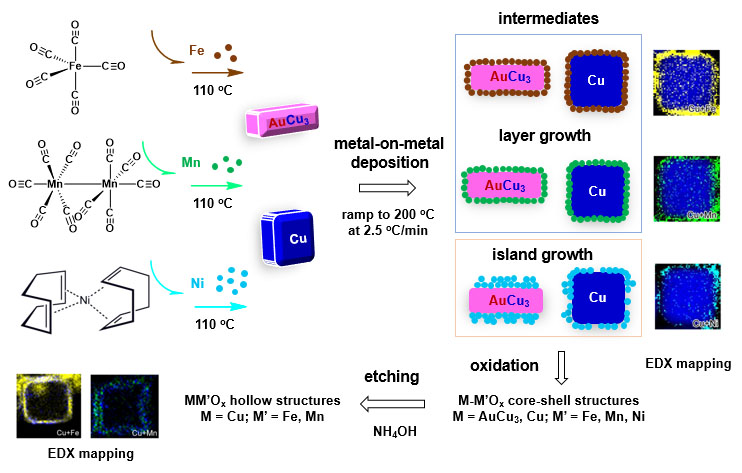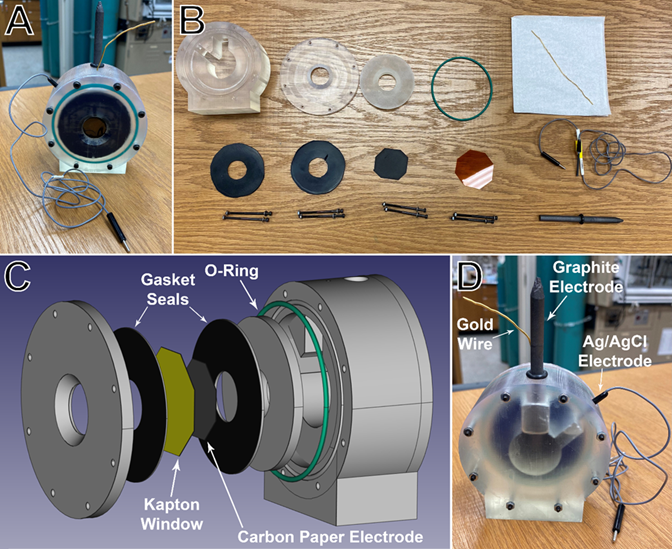|
Precisely-Controlled Synthesis of Nonprecious Metal Nanostructures This project focuses on the development of novel methods for controlling the arrangement of atoms in nonprecious metal nanostructures in an effort to establish the structure-property relationship in various applications. Methodology development includes scalable solution-based synthesis, as well as synthesis under extreme conditions, aiming to expand the materials tool box for different applications. Density functional theory (DFT) will be applied to understand and predict the synthesis. X-ray methods and electron microscopy will be used to monitor the reaction process.
|
|
Operando Study of Electrochemical Reactions on Heterogenerous Catalysts This project focuses on the development of operando techniques for study of heterogenerous catalysts during electrochemical reactions to establish the structure-property relationship, understand reaction mechanisms, and develop cost-effective active and stable catalysts for chemical reactions in electrolyzer/fuel cell applications. Technique development includes cell and experimental designs for study of the electrocatalysts under operando conditions using X-ray absorption spectroscopy (XAS), and vibrational spectroscopy. XAS spectral analysis will be performed through FEFF modeling. DFT will be applied and developed to understand the reaction mechanisms and microkinetics of the reactions.
|
|
Investigation of Engineered Nanomaterials in Biological Systems This project focuses the investigation of engineered nanomaterials in biological systems in an effort to understand the bio-nano interfaces and develop nanoplatforms for biological applications. Bio-nano interfaces are important to understand the effects of nanomaterials in biological systems. Man-made nanomaterials will be applied to biological systems and studied their interactions with living organelles in the environment. On the other hand, nanoplatforms will be developed for controlled release drug delivery to fight against antibiotics-resistant infectious diseases and cancer. The nanoplatforms consist of gold nanocages with surface functionalized with "smart" polymer which can response to internal or external stimuli for on-demand release of therapeutics. Such nanoplatforms are designed to introduce target capability and enable dual or multiple treatment modalities in addition to the conventional antibiotic or chemo-therapies which can significantly improve the treatment efficacy.
|


